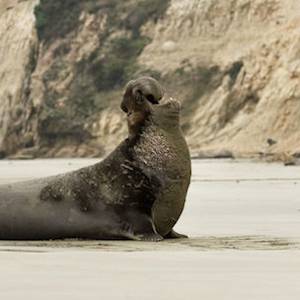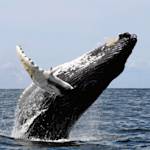Giant otters
1999 CE • Amazon River, Pantanal
"The Giant River Otter (Pteronura brasiliensis), often referred to as the river wolf, is a species in the Mustelid (weasel) family that is endemic to South America. It is both the world’s largest otter and largest member of the mustelid family, reaching up to 6 feet (1.8 meters) in length. The Giant River Otter only lives in three river systems: the Amazon, Orinoco and La Plata. With a streamlined body and webbed feet, this otter is a great swimmer well adapted to both terrestrial and freshwater environments. According to the International Union for Conservation, the Giant River Otter is endangered and considered extinct in Uruguay and likely extinct Argentina. The otter’s decline is mostly due to hunting for the pelt trade that peaked in the early 1970’s and habitat loss, which together led to local extinctions across the otter’s range. Protective actions in the 1970’s removed the economic incentive for hunting and halted all commercial hunting shortly thereafter." Today, Giant otters face the effects of habitat degradation and contamination from mining and agriculture. "The Giant River Otter is a top predator in aquatic systems, and therefore control prey species population sizes to help keep the river ecosystem in balance. They are also good ‘indicator’ species, meaning the population health of the giant river otter is representative of the health of the entire river ecosystem."
"Giant River Otter," Amazon Aid.
Image: Bernard DUPONT via Flickr, Attribution-ShareAlike 2.0 Generic (CC BY-SA 2.0)


Learn about Maya Lin’s fifth and final memorial: a multi-platform science based artwork that presents an ecological history of our world - past, present, and future.

Discover ecological histories and stories of former abundance, loss, and recovery on the map of memory.

Learn how we can reduce our emissions and protect and restore species and habitats – around the world.

See how art can help us rethink the problems we face, and give us hope that each one of us can make a difference.

Help make a global memorial something personal and close to home. Share your stories of the natural world.


